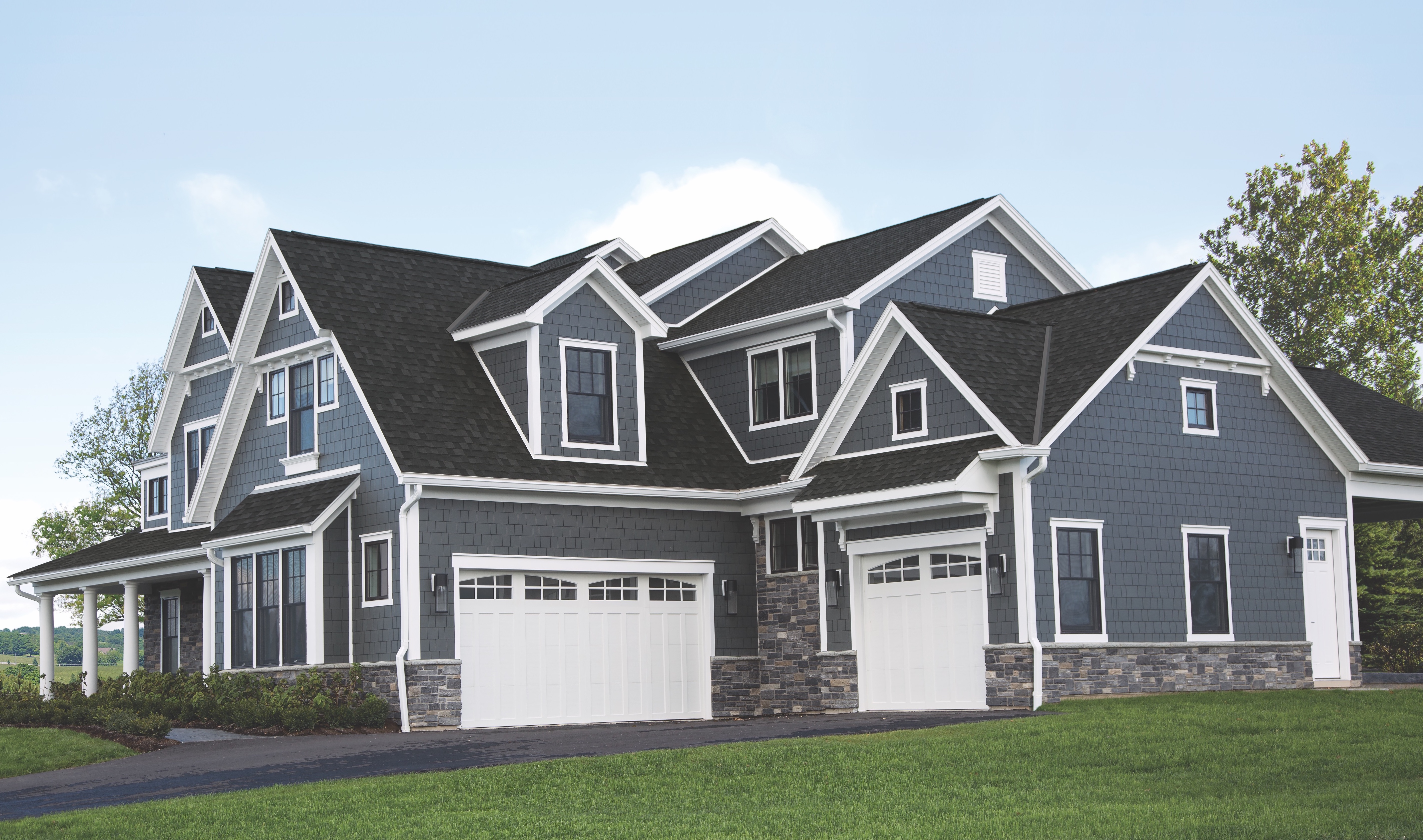The roof is one of a home's most prominent features—and one of its most vulnerable. Any roof you choose has to look great and stand up to what Mother Nature throws at it.
There are many roofing types available, but the most popular in residential construction is asphalt, and manufacturers are working hard to improve the durability of the product.
From a performance standpoint, some of the pressure is coming from the insurance industry. As insurance companies grow concerned about roof damage due to weather, they’ve been working with the Insurance Institute for Business & Home Safety to improve performance, says Alexandre Pecora, director of product management for Certain Teed Roofing.
“The market demand for products that will perform better and provide financial benefits to consumers is palpable,” says Stanley Bastek, director of marketing and sales development for Atlas Roofing’s shingle and underlayment division. “Insurance companies are responding to record-breaking storm activity by creeping up rates and deductibles while continuing to offer deep discounts to consumers that install roof shingles with UL 2218 impact ratings.”
Fifty-three percent thicker than standard architectural shingles and featuring an enhanced shadow effect, Timberline Ultra HD offers the look of wood shakes. The shingles feature StainGuard Plus time-release technology, which helps fight algae staining; Dura Grip adhesive helps reduce the risk of blow-off.
One solution is polymer-modified shingles, which have rubber in their formulation that causes hail to bounce rather than shatter.
Installation guides are among the features enhancing wind resistance. IKO offers shingles with ArmourZone , a larger nailing area that ensures correct nail placement and helps resist blow-off. Atlas’ HP42" shingles feature a 1 1/2-inch nailing area and double sealant pattern for a 130-mile-per-hour wind limited warranty with a standard four-nail application.
California’s Title 24, which requires new homes and retrofits to have cool roofs, also continues to infl uence product development. For one, there are more Cool Roof colors; previously, darker colors were more than double the cost. “Today they have access to the same color palette at basically the same price,” Pecora says.
Pecora and Mark Okland , IKO’s product development manager for North America, say cool roofs haven’t gained significant traction in other areas, but “we have no doubt that [they] will spread across America,” Okland says.
The HP42" roofing shingle has a 42-inch width and an enhanced 6-inch exposure to deliver more coverage. This format uses a seven-course, zero-waste offset installation, which allows installers to run seven courses down the roof before having to reset. The larger coverage and new installation can cut up to four labor hours off a typical job, the company says.
COLORFUL ROOFING OPTIONS
When it comes to aesthetics, blacks, grays, and browns continue to dominate, but there’s more complexity. “We’re seeing a trend toward more diverse colors or variations in the colors of the shingle,” Okland notes. For example, Pecora says, rather than a solid black, the hue will be combined with grays to provide contrast. Grays may have red or blue tones.
High-definition colors are increasingly popular. One such product, IKO’s high-definition shake shingle, replicates the shadow band of wood shakes. Atlas’ Pinnacle Pristine shingles offer an HD color palette in which colors are strategically added for depth and character.
“Homeowners are looking for the shingle style and color that best complements their home and fits with their aesthetic,” says Leslie Franklin , executive director of residential marketing at GAF. “Individuality is being expressed in the whole exterior portfolio, from exterior paint and siding colors, to outdoor living areas, to the roof.”
Arcadia Shake large-format shingles mimic the look of split wood shakes, including four cutouts on the top of each piece, variegated edges for an authentic appearance, and five colors designed to replicate wood’s charm. The shingles are maintenance-free and offer UL Class A fire resistance and Class F and Class H wind ratings, the maker says.
Choosing from the variety of colors and styles can be overwhelming, so IKO offers RoofViewer , an online tool that allows homeowners to see the roof on an image of their home.
GAF’s Virtual Home Remodeler visualization tool also allows buyers to try out design options. And the company’s e360 tool allows pros to provide customers with a 3-D rendering of their home with their shingle choice. The Roof Inspiration Center from Atlas includes a Roof & Home Design Studio, RoofSwap, and Visual Product Selector .
Such tools are important for a product category that can be daunting in its breadth of choices. But homeowners can rest assured that the right option is available to suit their style, budget, and performance needs.
HAS TESLA CRACKED THE (SOLAR-SHINGLE) CODE?
Few roofing products have generated as much buzz as Tesla’s solar shingles—glass tiles that collect energy to power the home. The tiles were installed on the first homes this spring.
In May, Fortune magazine reviewed Tesla’s new patent to determine how the roof tiles are able to collect nearly the same amount of solar energy as a panel but still look like shingles. “According to the patent, Tesla achieved this by designing a special louvered glass, which functions much the same way a window blind would,” the magazine reported.
The shingles come in four styles, and customers can combine solar and non-solar tiles, which look the same from the street, to achieve the amount of energy needed. The tiles carry a warranty for the lifetime of the home and offer a Class 4 hail rating and Class F wind rating.
This story originally appeared in the July/August 2018 issue of PRODUCTS magazine. See the print version here.











